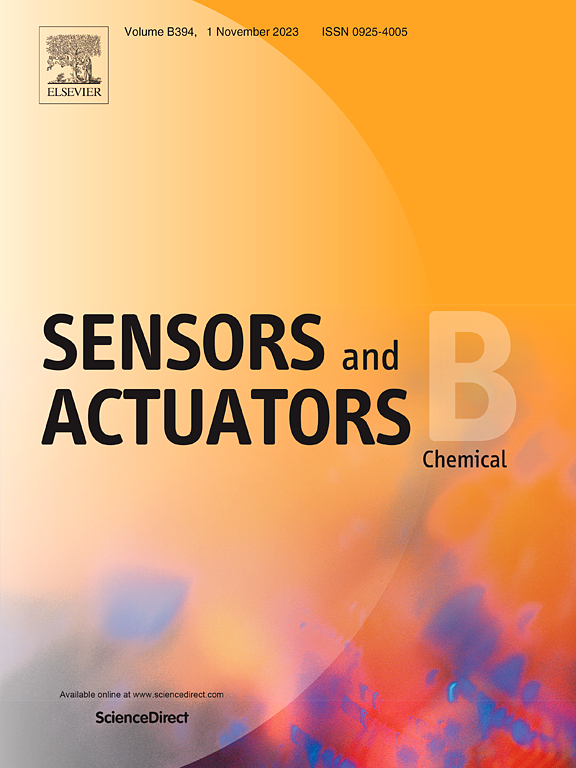Multi-element transition metal electrochemiluminescence system based on efficient quenching strategy for sensitive detection of glial fibrillary acidic protein
IF 8
1区 化学
Q1 CHEMISTRY, ANALYTICAL
引用次数: 0
Abstract
In this study, we skillfully selected six transition metals and designed two materials with superior performance. NiMoO4 was used for immobilization of Ru to engineer RuMoNi nanorods (NRs) through a facile hydrothermal approach, functioning as potent ECL emitters. The robust binding interaction between Ru and NiMoO4 effectively addressed the instability issue caused by strong solubility of Ru. This incorporation not only narrowed the band gap, but facilitated the formation of active sites. Furthermore, we incorporated Pt into the transition metals Cu and Co to form a ternary alloy, PtCuCo, as the signal-off probe that exhibited exceptional biocompatibility. This combination leveraged the synergistic effect among the three elements to enhance the sensor’s sensitivity by inhibiting the luminescence process, thereby improving a quenching performance while simultaneously reducing the Pt loading. By rationally utilizing interactions such as resonance energy and electron transfer, we constructed a sandwich-type ECL immunosensor with high signal response and low background noise to detect glial fibrillary acidic protein. Remarkably, the developed immunosensor demonstrated an impressive detection limit of 1.66 pg mL−1 and it has been carried out to the analysis of human serum samples, proving great prospects as an immunoassay platform for early diagnosis and treatment of gliomas.

基于高效淬火策略的多元素过渡金属电化学发光系统,用于灵敏检测神经胶质纤维酸性蛋白
在这项研究中,我们巧妙地选择了六种过渡金属,并设计出两种性能优越的材料。我们利用 NiMoO4 固定 Ru,通过简便的水热法设计出 RuMoNi 纳米棒(NRs),使其成为有效的 ECL 发射器。Ru 和 NiMoO4 之间强大的结合相互作用有效地解决了 Ru 溶解性强所导致的不稳定性问题。这种结合不仅缩小了带隙,还促进了活性位点的形成。此外,我们还将铂与过渡金属铜和钴结合,形成了三元合金 PtCuCo,作为信号关探针,表现出优异的生物相容性。这种组合利用了三种元素之间的协同效应,通过抑制发光过程来提高传感器的灵敏度,从而在减少铂负载的同时提高淬火性能。通过合理利用共振能量和电子转移等相互作用,我们构建了一种具有高信号响应和低背景噪声的夹心型 ECL 免疫传感器,用于检测神经胶质纤维酸性蛋白。值得注意的是,所开发的免疫传感器的检测限达到了令人印象深刻的 1.66 pg mL-1,并已应用于人类血清样本的分析,证明了其作为免疫测定平台用于胶质瘤早期诊断和治疗的巨大前景。
本文章由计算机程序翻译,如有差异,请以英文原文为准。
求助全文
约1分钟内获得全文
求助全文
来源期刊

Sensors and Actuators B: Chemical
工程技术-电化学
CiteScore
14.60
自引率
11.90%
发文量
1776
审稿时长
3.2 months
期刊介绍:
Sensors & Actuators, B: Chemical is an international journal focused on the research and development of chemical transducers. It covers chemical sensors and biosensors, chemical actuators, and analytical microsystems. The journal is interdisciplinary, aiming to publish original works showcasing substantial advancements beyond the current state of the art in these fields, with practical applicability to solving meaningful analytical problems. Review articles are accepted by invitation from an Editor of the journal.
 求助内容:
求助内容: 应助结果提醒方式:
应助结果提醒方式:


